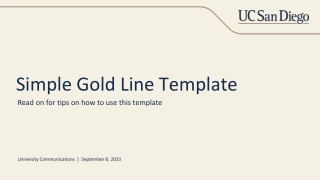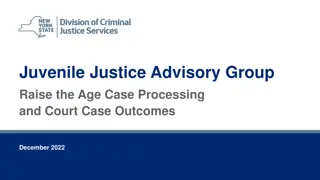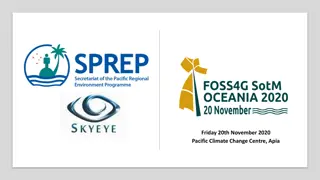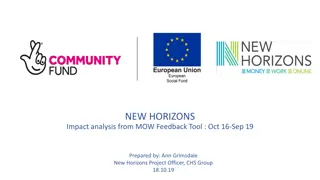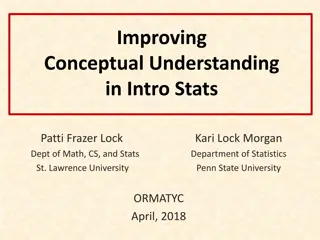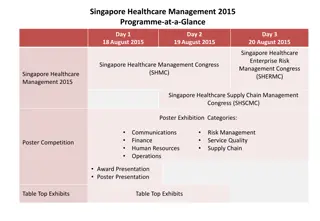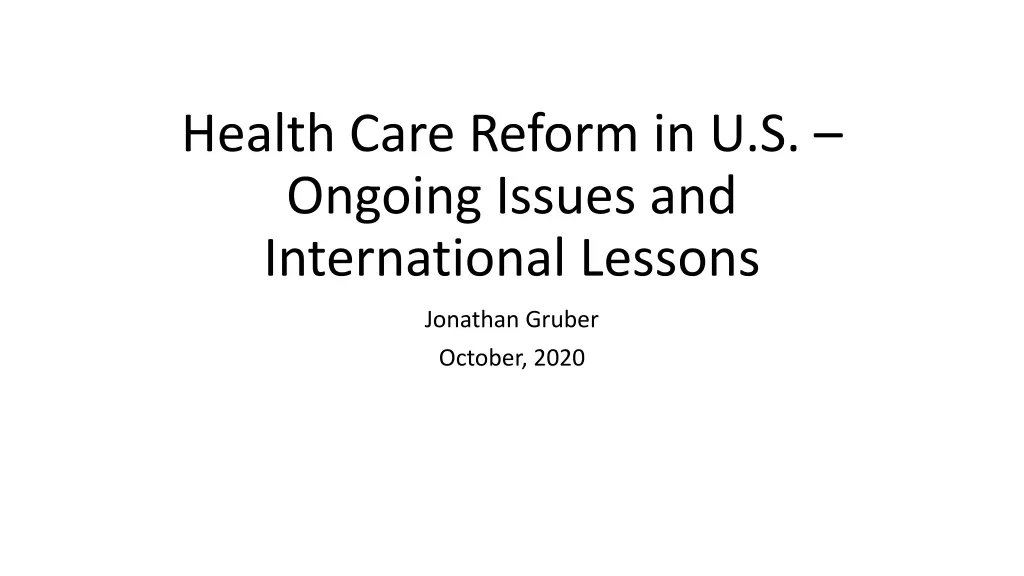
Healthcare Reform Issues: A Comprehensive Overview
Explore the ongoing issues and international lessons in U.S. healthcare reform, covering topics such as the state of healthcare before and after the ACA, the three-legged stool model, challenges faced, and potential future directions. Gain insights into the complexities of the U.S. healthcare system and the impact of various policy changes on coverage, costs, and access to care.
Download Presentation

Please find below an Image/Link to download the presentation.
The content on the website is provided AS IS for your information and personal use only. It may not be sold, licensed, or shared on other websites without obtaining consent from the author. If you encounter any issues during the download, it is possible that the publisher has removed the file from their server.
You are allowed to download the files provided on this website for personal or commercial use, subject to the condition that they are used lawfully. All files are the property of their respective owners.
The content on the website is provided AS IS for your information and personal use only. It may not be sold, licensed, or shared on other websites without obtaining consent from the author.
E N D
Presentation Transcript
Health Care Reform in U.S. Ongoing Issues and International Lessons Jonathan Gruber October, 2020
U.S. Health Care Before ACA 60% insured through employer with large tax subsidy 20% insured through government 20% uninsured nominally or effectively Insurer discrimination under multiple dimensions Can t be banned in a vacuum
ACA model Three-legged stool Ban discrimination and non-insurance Individual mandate Medicaid expansions/tax credits Initial policy Success 20 million covered Premiums and costs below projections Political failure Delay was key Early sabotage e.g. risk corridors
ACA Survivor Repeal and replace turns out to be repeal and repeal Plus overreach on Medicaid ACA becomes popular But significantly weakened Individual mandate gone how important? More escape valves from regulated insurance market Medicaid expansion still partial
3 Dimensional Chess Supremes, President, Senate Court Survive Survive Survive Survive Kill Kill Kill Kill President Trump Trump Biden Biden Trump Trump Biden Biden Senate Republican Democratic Republican Democratic Republican Democratic Republican Democratic Outcome Continued Weakening Nothing Regulatory Improvements Overhaul (?) ACA gone ACA gone Some regulation Tech Fix & Overhaul
WWJ(RB)D? Campaign promises 8.5% of income cap Default to gold Public option Extend Medicare to age 60 First two are just money! But have important implications
Current Law Income Group % of Individuals who Spend > 10% % of Individuals who Spend > 15% % of Individuals who Spend > 20% 133-150 0.00 0.00 0.00 150-200 18.36 3.31 0.25 200-250 40.87 18.61 10.23 250-300 58.88 21.70 12.64 300-350 65.12 19.72 8.26 350-400 62.30 13.11 5.22 400-500 82.18 57.47 33.16 500-600 74.98 44.00 19.44 Over 600 43.32 14.43 4.71
JRB Plan 1 Existing announcement Income Group % of Individuals who Spend > 10% % of Individuals who Spend > 15% % of Individuals who Spend > 20% 133-150 0.00 0.00 0.00 150-200 18.36 3.31 0.25 200-250 30.82 10.58 3.23 250-300 39.23 12.30 3.59 300-350 38.85 7.03 2.11 350-400 29.47 5.85 1.90 400-500 30.81 4.45 0.79 500-600 25.37 4.38 0.58 Over 600 15.04 0.67 0.00
Alternative: Enhanced OOP Protection & 12% Cap Income Group % of Individuals who Spend > 10% % of Individuals who Spend > 15% % of Individuals who Spend > 20% 133-150 0.00 0.00 0.00 150-200 3.46 0.08 0.00 200-250 10.77 0.38 0.00 250-300 23.28 1.69 0.06 300-350 38.85 7.03 2.11 350-400 29.47 5.85 1.90 400-500 60.63 5.27 1.31 500-600 86.75 9.01 1.66 Over 600 66.96 5.74 0.19
Public Option & Medicare Expansion Heavy or Light? How to enroll those in non-expansion states Medicaid is a state run program How to coordinate with existing exchange options vs. deviation from Medicare Medicare expansion or buy in? How to price buy in? Why necessary given ACA? Can this happen with filibuster in place? Particularly heavy public option & age 60 expansion of Medicare
Why cant go further 3 fundamental barriers to single payer Financing from hidden to explicit tax Disruption Insurance industry opposition
But this is the easy part! Coverage is uniquely U.S. issue but cost control is worldwide Main tool every other country uses price regulation Has made sense since Arrow (1963) But U.S. is an outlier
Worldwide challenge: genetic treatments of rare disease Price regulation in other nations holds since it is tied to value But new treatments have virtually unbounded value So common problem around the world Example: SMA treatment pricing similar around the world
Cumulative number of approvals between January 2020 and December 2034, obtained from 1,000,000 simulation runs.
Cumulative spending on treating patients with gene therapy. The line represents the mean and the shaded region represents the 5th and 95th percentiles of our simulation.
Cumulative spending on treating patients with gene therapy. The line represents the mean and the shaded region represents the 5th and 95th percentiles of our simulation.
Exposure is potentially enormous 10% of U.S. population has a rare illness Suppose that 10% of them can be treated at $1 million per shot That is $3 trillion!
Problem: QALY measurement (with Conti) Huge variation and uncertainty around QALY issues, particularly for children How do you measure the constellation of rare physical consequences? how do you translate from parental valuation? Three initiatives are needed worldwide 1) Forward-looking data collection on well-being create a catalog NOW of the QALY from diseases that may be cured could be financed by tax on drug companies 2) Invest in science of evaluation moving from pure RCT to adaptive trials 3) More public release of information from drug trials subject to patient confidentiality concerns
Time for a new model? Should we be moving to a public utility model of cost-plus reimbursement? Much more difficult with drug development Measurement of costs with joint production What is the profit necessary to motivate companies? But can we afford to pay based on QALY when drugs are so efficacious? What is the alternative?

